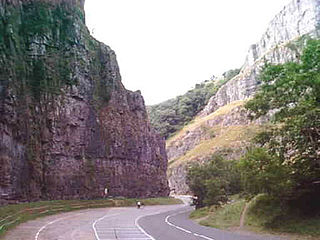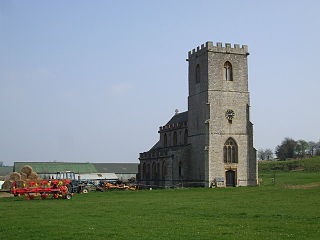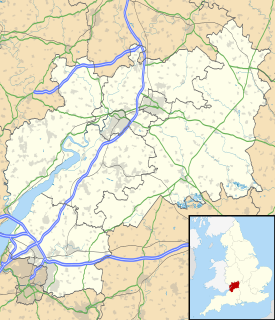| Site of Special Scientific Interest | |
 | |
| Area of Search | Avon |
|---|---|
| Grid reference | ST415689 |
| Coordinates | 51°25′17″N2°50′34″W / 51.4215°N 2.8427°W Coordinates: 51°25′17″N2°50′34″W / 51.4215°N 2.8427°W |
| Interest | Geological |
| Area | 15.37 hectares (0.1537 km2; 0.0593 sq mi) |
| Notification | 1997 |
| Natural England website | |
Kenn Church, Kenn Pier & Yew Tree Farm SSSI (grid reference ST415689 ) is a 15.37 hectare geological Site of Special Scientific Interest near the village of Kenn, Somerset, notified in 1997.

The Ordnance Survey National Grid reference system is a system of geographic grid references used in Great Britain, distinct from latitude and longitude. It is often called British National Grid (BNG).

The hectare is an SI accepted metric system unit of area equal to a square with 100-metre sides, or 10,000 m2, and is primarily used in the measurement of land. There are 100 hectares in one square kilometre. An acre is about 0.405 hectare and one hectare contains about 2.47 acres.

Kenn is a small village and civil parish in county of Somerset, England. It falls within the area of the North Somerset unitary authority. It lies on the B3133 road near Clevedon in the North Somerset Levels. The parish has a population of 431.
The site is listed in the Geological Conservation Review because it consists of a complex sequence of Pleistocene sediments, including coarse glacial outwash gravels at the base overlain by a complex sequence of interglacial freshwater, estuarine and marine sands. The sequence is then capped by aeolian (windblown) coversands and Holocene silts. [1]
The Geological Conservation Review (GCR) is produced by the UK's Joint Nature Conservation Committee and is designed to identify those sites of national and international importance needed to show all the key scientific elements of the geological and geomorphological features of Britain. These sites display sediments, rocks, minerals, fossils, and features of the landscape that make a special contribution to an understanding and appreciation of Earth science and the geological history of Britain, which stretches back more than three billion years. The intention of the project, which was devised in 1974 by George Black and William Wimbledon working for the Governmental advisory agency, the Nature Conservancy Council (NCC), was activated in 1977. It aimed to provide the scientific rationale and information base for the conservation of geological SSSIs (Sites of Special Scientific Interest, protected under British law. The NCC and country conservation agencies were established in 1990 when JNCC became established and took over responsibility for managing the GCR site assessment process, and publishing accounts of accepted sites.
The Pleistocene is the geological epoch which lasted from about 2,588,000 to 11,700 years ago, spanning the world's most recent period of repeated glaciations. The end of the Pleistocene corresponds with the end of the last glacial period and also with the end of the Paleolithic age used in archaeology.










